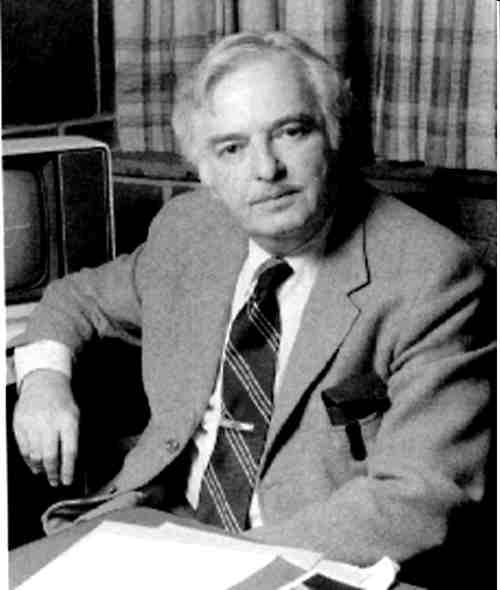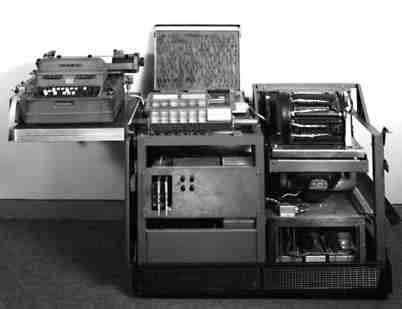| Kemeny & Kurtz - The Invention Of BASIC |
| Written by Historian | ||||
Page 1 of 3
BASIC was the language of the personal computer back in the 1980s. It was also the language that most people associate with Microsoft in its early days - Microsoft Basic, then QBasic, Visual Basic and finally Visual Basic .NET. Microsoft started as a company by selling implemenations of the language for just about every personal computer on the market. Who invented Basic? Bill Gates? No. There are even some, its real inventors included, who say that he was the man who ruined the language. Basic is a language that was invented for the sole purpose of making programming as easy as it could possibly be and the argument goes that the Basics that we have all come to know have abandoned this goal in favour of trying to look like other languages. But to understand this argument you need to know about Kemeny and Kurtz the true inventors of Basic and, eventually, the inventors of True Basic.
John G Kemeny (1926-1992) John Kemeny was born in Hungary but his parents emigrated to the USA in 1940 when he was 12. Clearly the effort of learning English wasn't enough to damage his other studies because he entered Princeton to study maths. This turned out to be more eventful than you might imagine because in his first year he was drafted to the Los Alamos project to help with the project to build the atomic bomb with Richard Fenyman as his boss. This is where he first encountered electronic computers - in the form of a large room full of IBM calculators! It took weeks to solve even a simple numerical problem. After studying maths at Princeton he became one of the many research assistants to Albert Einstein, yes THE Albert Einstein. "People would ask - did you know enough physics to help Einstein? My standard line was: Einstein did not need help in physics. But contrary to popular belief, Einstein did need help in mathematics. By which I do not mean that he wasn't good at mathematics. He was very good at it, but he was not an up-to-date research level mathematician. His assistants were mathematicians for two reasons. First of all, in just ordinary calculations, anybody makes mistakes. There were many long calculations, deriving one formula from another to solve a differential equation. They go on forever. Any number of times we got the wrong answer. Sometimes one of us got the wrong answer, sometimes the other. The calculations were long enough that if you got the same answer at the end, you were confident. So he needed an assistant for that, and, frankly, I was more up-to-date in mathematics than he was." Kemeny spent many hours checking Einstein's calculations and said "if we both got the same answer then the chances were overwhelming that it was right". Even here computers would have been helpful, but as Einstein told Johnny Von Neumann he needed a different sort of machine, one that could manipulate symbols. Little did Kemeny realise that this would be where his future lay. A doctorate, in maths, at the age of 23 and a full professorship at 27 at Dartmouth College give you some idea of how fast Kemeny's career was moving. But rather than pure research his interests settled on teaching and in particular teaching computing. Dartmouth College, a small university founded in 1769 specialising in the humanities, is a strange location to look for computer breakthroughs but in 1940 Dr Stiblitz of Bell Labs demonstrated the use of a computer over a telephone line in the days when computers hardly existed. Then in 1956 John McCarthy organised a summer school on artificial intelligence - virtually the first use of the term. At first Dartmouth's active involvement in computing was via an IBM 704 at MIT.
Thomas E Kurtz Tom Kurtz also received his PhD from Princeton (1956) and he joined the Maths department at Dartmouth in 1956 and inevitably Kurtz met Kemeny. Having taken a pay cut to work at Dartmouth he asked Kemeny if there was any way of increasing his income. One suggestion was an IBM research fellowship at the MIT computing site and so he and Kemeny , together with John McCarthy worked together on one of the most primitive of computers.
Kemeny and Kurtz both learned Share Assembly Language and very soon after realised that this was no way to teach computing! It was obvious that a new language was needed and they wasted no time in trying to invent one. DARSIMCO (1956) - DARtmouth SIMplified COde - was just a system of templates, each one corresponding to a small number of assembly language commands. Fortunately Fortran became available the following year and provided a rather more advanced model of what a high-level language should be like and what it could achieve. Computing really came to Dartmouth in 1959 when an LGP-30 machine with 4K 30-bit words provided by a magnetic drum and a 16-instruction set was installed.
The LGP-30 (Librascope General Precision) was described as a desk computer and was manufactured from about 1956.
<ASIN:0201134330> <ASIN:0201157012> |
||||
| Last Updated ( Wednesday, 20 November 2024 ) |




